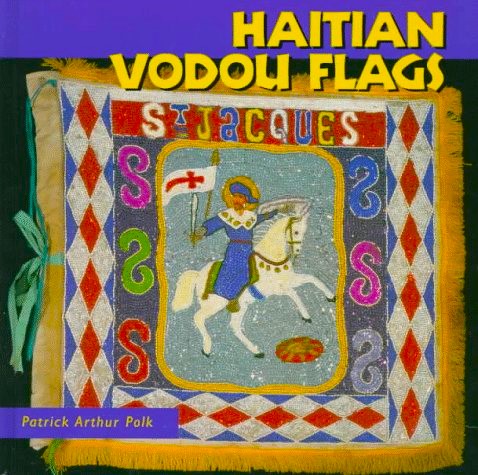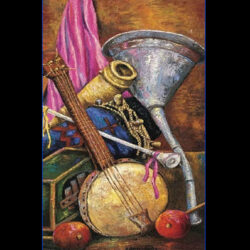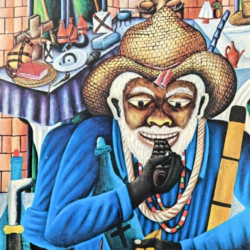Description
Haitian Vodou flags, also known as drapo Vodou or drapeaux Vodou, represent a fascinating intersection of art, tradition, and spirituality. These intricately designed flags are not merely decorative pieces but carry deep cultural significance, reflecting the complex beliefs and practices of Haitian Vodou, a syncretic religion with roots in African, indigenous Caribbean, and European traditions. In this essay, we will explore the history, symbolism, artistic techniques, and contemporary significance of Haitian Vodou flags, delving into their role as both religious artifacts and works of art.
Historical Context
To understand Haitian Vodou flags, one must delve into the history of Vodou itself. Vodou emerged in Haiti during the colonial era, blending elements of various African spiritual practices brought by enslaved people with Catholicism imposed by European colonizers. This syncretic fusion gave rise to a unique belief system that encompasses ancestral reverence, spirit worship, and the veneration of deities known as lwa.
The origins of Vodou flags can be traced back to the early 20th century when practitioners began creating textile banners to honor specific lwa during religious ceremonies. These flags served as visual representations of the spirits, incorporating symbols, colors, and designs associated with each lwa.
Symbolism and Design
Haitian Vodou flags are rich in symbolism, with each element carrying profound meaning within the Vodou cosmology. Colors play a crucial role, with red symbolizing power and vitality, white representing purity and spiritual enlightenment, blue signifying healing and protection, and so on. These colors are often arranged in intricate patterns, sometimes accompanied by geometric shapes or symbols such as veves, sacred drawings used in Vodou rituals to invoke specific lwa.
The images depicted on Vodou flags vary widely, ranging from ancestral figures and mythical creatures to symbolic objects and natural elements like trees or rivers. Each image is carefully chosen to convey the essence of the lwa it represents, such as Baron Samedi, the spirit of death and fertility, depicted with his iconic top hat and crossed bones, or Erzulie Freda, the goddess of love and beauty, symbolized by flowers and hearts.
Artistic Techniques
Creating a Haitian Vodou flag is a labor-intensive process that requires both artistic skill and spiritual devotion. The flags are typically made from hand-dyed fabric, often using traditional indigo or other natural dyes. Artisans then employ various techniques such as appliqué, embroidery, and sequin work to bring the designs to life. Many flag makers are skilled in the use of needle and thread, meticulously stitching intricate details with remarkable precision.
Contemporary Significance
In contemporary Haiti and beyond, Haitian Vodou flags continue to hold significant cultural and artistic value. They are not only cherished as sacred objects within Vodou communities but also recognized as important artistic expressions of Haitian identity and heritage. The intricate craftsmanship and vibrant colors of these flags have garnered international acclaim, attracting collectors, scholars, and art enthusiasts worldwide.
Moreover, the production of Vodou flags provides economic opportunities for Haitian artisans, contributing to the country’s cultural economy. Organizations and initiatives aimed at preserving Haitian art and supporting local artists play a crucial role in ensuring the continued vitality of this unique art form.
Conclusion
Haitian Vodou flags represent a captivating fusion of art, spirituality, and cultural heritage. Through their intricate designs, rich symbolism, and historical significance, these flags serve as powerful conduits of Haitian Vodou’s complex belief system. As they continue to inspire awe and appreciation, Vodou flags remind us of the enduring resilience and creativity of Haiti’s artistic traditions, making them an integral part of the global artistic landscape.





Reviews
There are no reviews yet.